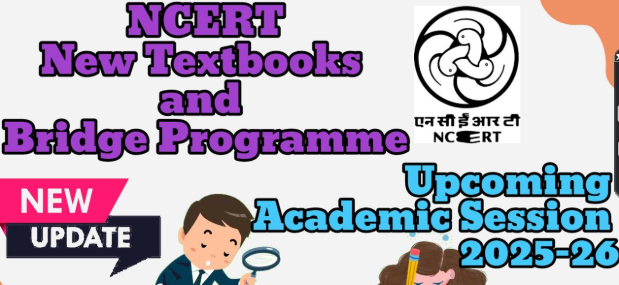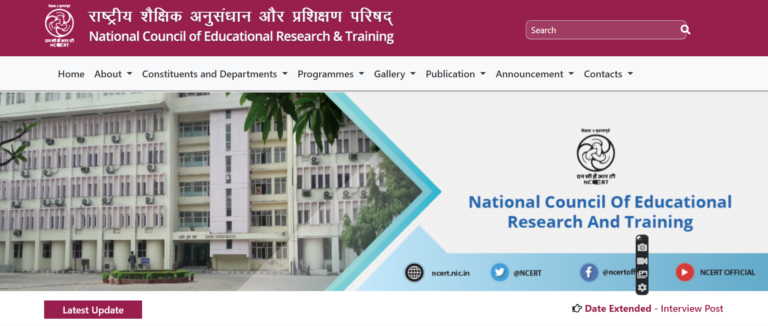
NCERT BRIDGE COURSE FOR V & VIII (2025-26) FOR TEACHERS
Introduction
In a rapidly evolving education system, bridging learning gaps is no longer an option—it’s a necessity. The NCERT Bridge Course for Classes V & VIII (2025-26) is designed with this very mission. It’s a focused initiative that equips teachers with the tools they need to support students in overcoming foundational learning hurdles, especially post-pandemic and during crucial academic transitions.
What is the NCERT Bridge Course?
The NCERT Bridge Course is a short-term academic intervention aimed at strengthening the core skills of students in grades V and VIII. Think of it as a springboard—helping kids bounce back into mainstream learning after gaps or disruptions.
Purpose of the Bridge Course
The main goal? Fill in the learning gaps. Many students fall behind due to various reasons—lack of resources, inconsistent schooling, or personal challenges. This course ensures that no child is left behind by providing a structured learning path to catch up.
Target Audience: Who is it for?
The bridge course is especially curated for students entering Class V and Class VIII, which are transition years in most school systems. But the real superheroes behind this initiative? The teachers.
Role of Teachers in Implementation
Teachers are not just instructors here—they’re facilitators, mentors, and evaluators. Their role involves planning daily activities, using formative assessments, and creating an inclusive learning environment that adapts to each student’s pace.
Why Classes V and VIII?
You might wonder—why focus on these two grades? Simple.
Addressing Foundational Learning Gaps
Class V wraps up primary schooling, while Class VIII serves as the final checkpoint before high school. These are make-or-break years for many students, especially in subjects like Math and Language.
Smooth Transition Between Grades
Bridging concepts between primary, middle, and secondary education helps in reducing anxiety and boosting student readiness.
Structure of the Bridge Course
This isn’t your typical syllabus. It’s carefully structured to make learning both remedial and fun.
Duration and Timeline (2025-26)
The course typically runs for 6 to 8 weeks, ideally at the start of the academic year or during extended vacations like summer breaks.
Subject-Wise Breakdown
Language Development
Focuses on reading comprehension, vocabulary building, writing practice, and spoken fluency.
Mathematical Thinking
Covers basic arithmetic, logical reasoning, and practical problem-solving—delivered through games, puzzles, and hands-on activities.
Environmental Studies and General Awareness
Revives curiosity about the world—linking science, geography, and social concepts with real-life examples.
Pedagogical Approaches Used
Activity-Based Learning
No more dull lectures. The focus is on experiential learning—group tasks, storytelling, role plays, and interactive exercises.
Continuous Evaluation Techniques
Gone are the days of one-time tests. Teachers use worksheets, oral questioning, peer review, and simple rubrics for ongoing assessments.

Assessment and Monitoring
Tools for Evaluation
From baseline assessments to progress cards, every step is tracked using student-friendly tools that help in understanding where improvement is needed.
Role of Feedback
Teachers are encouraged to give constructive feedback regularly, which boosts motivation and guides future learning.
Resources Provided to Teachers
Teacher Handbooks and Guides
Every teacher receives a comprehensive manual, including daily lesson plans, tips for activities, and evaluation templates.
Online Training Modules
Digital courses on pedagogy, activity planning, and child psychology make sure teachers are well-equipped and confident.
Benefits for Students
Boost in Confidence and Skills
Imagine a student who once feared Math, now solving problems with ease—that’s the magic of focused attention and practice.
Better Preparedness for Regular Curriculum
By addressing learning delays, students are ready to tackle the year’s curriculum head-on without fear or hesitation.
Challenges in Implementation
Teacher Workload and Training
Let’s face it—teachers already have a lot on their plates. Adding a bridge course means more planning and energy, especially if training is inadequate.
Resource Availability
Not all schools have equal access to teaching aids, digital devices, or support staff, which can hinder smooth execution.
Government Support and Policy Framework
NCERT and Ministry Involvement
The initiative is backed by NCERT and the Ministry of Education, ensuring alignment with the National Education Policy (NEP) 2020.
Funding and Infrastructure
Many states are now receiving special grants to set up bridge classrooms, resource rooms, and even mobile libraries.
How Teachers Can Prepare for 2025-26
Planning and Classroom Management
Start early. Use previous student reports, collaborate with colleagues, and design weekly plans that are realistic and engaging.
Engaging Parents and Community
A child’s learning doesn’t stop at school. Teachers should involve parents and local volunteers to support activities and encourage practice at home.
Conclusion
The NCERT Bridge Course for Classes V and VIII (2025-26) is more than just an academic intervention—it’s a stepping stone toward educational equality and inclusive growth. With the right mindset, resources, and support, teachers can transform classrooms into thriving learning hubs where every student gets the opportunity to shine. The upcoming session is not just another academic year—it’s a fresh start, a second chance, and a promise of a better learning journey for every child.
FAQs
1. What is the duration of the NCERT Bridge Course?
The course usually spans 6–8 weeks, ideally conducted at the beginning of the academic session or during vacation time.
2. Is the bridge course compulsory for all schools?
While highly recommended, its implementation may vary by state and school type depending on resources and policies.
3. How are students assessed in the Bridge Course?
Teachers use continuous evaluation methods like worksheets, observations, and short quizzes rather than formal exams.
4. Do teachers get any special training for this course?
Yes, NCERT provides handbooks, online training modules, and workshops to help teachers execute the program effectively.
5. Can parents be involved in the Bridge Course activities?
Absolutely! Parental involvement is encouraged to reinforce learning at home and support students emotionally and academically.
Please don’t forget to leave a review.

